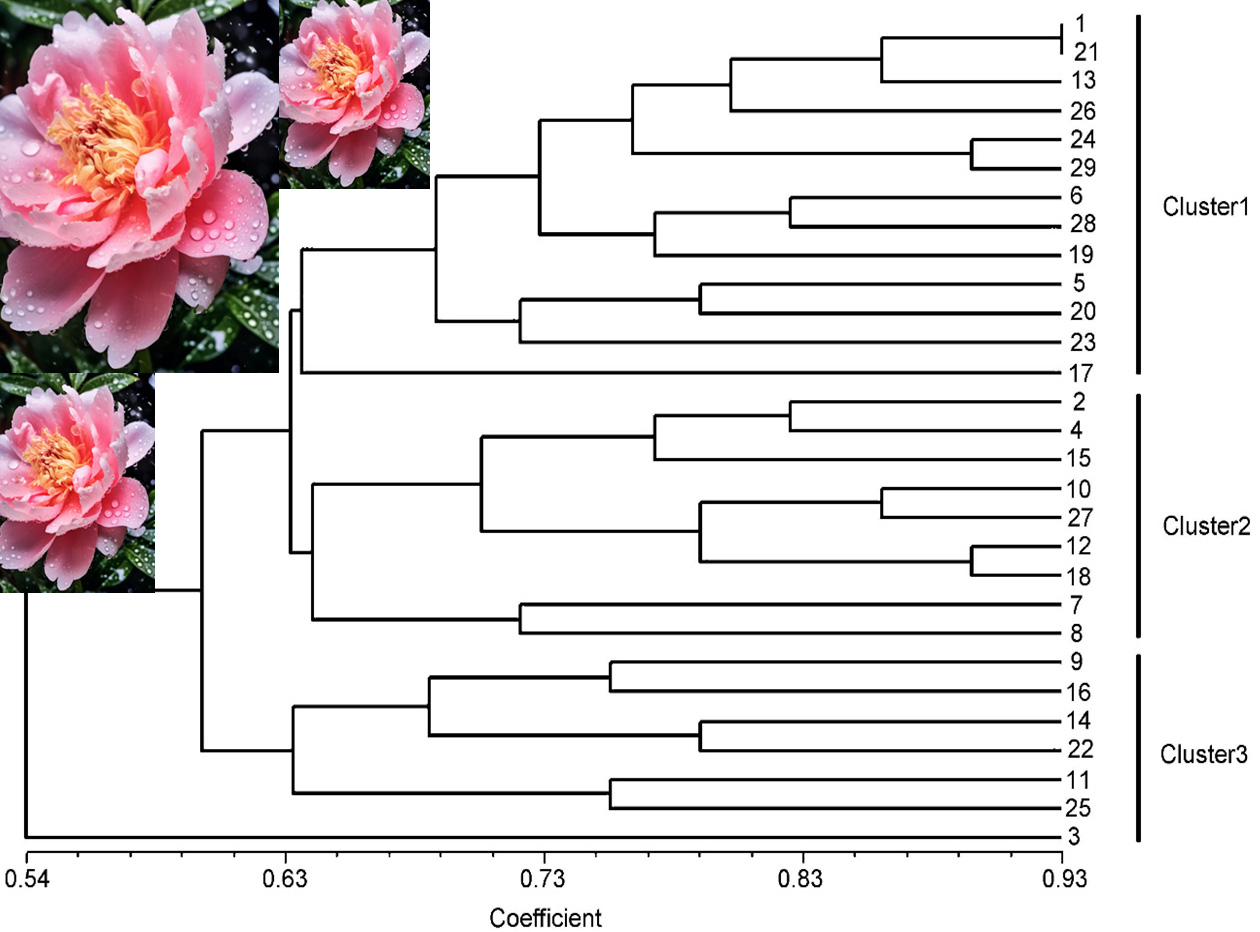We used inter-primer binding site PCR (iPBS-PCR) to amplify the relevant fragments from the northwest-plain tree peony Red Hydrangea and central-plain variety Luoyanghong, then the polymorphic fragments were cloned, sequenced and analyzed by relevant bioinformatics software; 12 long terminal repeat (LTR) sequences were obtained from peony LTR retrotransposons. The nucleotide sequence had the highest heterogeneity, deletion mutation was the main behavior, the length of the nucleotide sequences ranged from 313 to 894 bp, and homologous sequences ranged from 31.1% to 65.8%. Cluster analysis of the amino acid sequence and the LTR retrotransposons from different plant LTR amino acid sequences revealed high homology between relevant sequences of some other plants, which suggests transverse transfer between the LTR retrotransposons. Furthermore, we designed primers according to the cloned LTR sequence and analyzed 29 different varieties of peonies using the sequence-specific amplification polymorphism molecular marker method, which showed high polymorphism. LTR sequences from peony using iPBS may be useful and provide a new technology for peony germplasm resource evaluation.

ZHANG Xi
,
HOU Xiao-Gai
. iPBS-PCR Used for Cloning and Analysis of Long Terminal Repeat Transposons in Tree Peony (Paeonia)[J]. Chinese Bulletin of Botany, 2014
, 49(3)
: 322
-330
.
DOI: 10.3724/SP.J.1259.2014.00322


